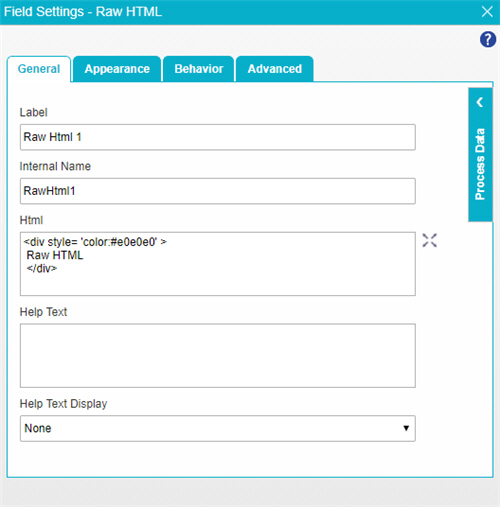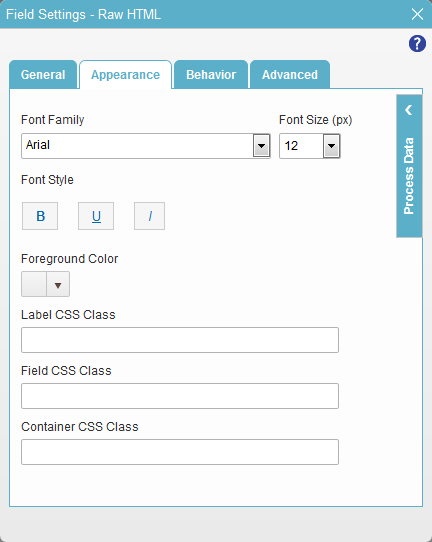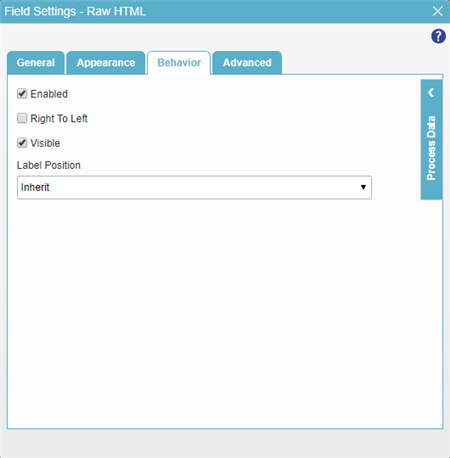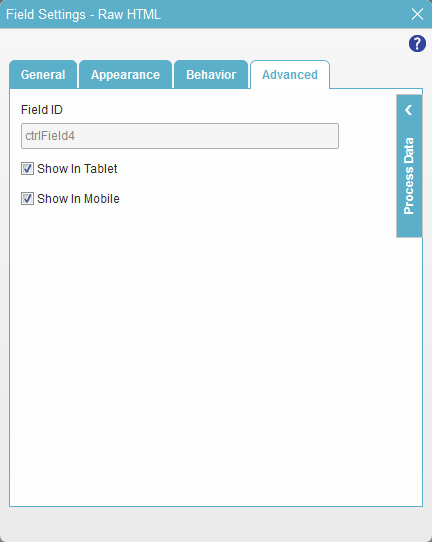Raw HTML form control
A form control that lets you show plain text HTML code, or any other code, in your form.
Configure the Raw HTML form control
To configure
the
Raw HTML  control,
do the procedure in this topic.
control,
do the procedure in this topic.
Video: Common Configuration Settings in eForm Controls
Examples
- (Example) Set the Title for the Create Absence Request eForm
- (Example) Set the Employee Information Subtitle for the Create Absence Request eForm
- (Example) Set the Leave Details Subtitle for the Create Absence Request eForm
- (Example) Set the Comments Subtitle for the Create Absence Request eForm
- (Example) Set the Title for the Create Absence Request eForm
- (Example) Set the Title for the Manager Approval eForm
- (Example) Set the Subtitle for the Manager Approval eForm
- (Example) Set the Title for the Sequential Approval eForm
- (Example) Set the Subtitle for the Sequential Approval eForm
- (Example) Set the Title for the Parallel Approval eForm
- (Example) Set the Subtitle for the Parallel Approval eForm
- (Example) Set the Title for the Voting Approval eForm
- (Example) Set the Subtitle for the Voting Approval eForm
- Examples - Step-by-step use case examples, information about what types of examples are provided in the AgilePoint NX Product Documentation, and other resources where you can find more examples.
How to Start
- On the Application Explorer screen, do one of these:
- Do one of these:
- Add a Raw HTML
 control:
control:
- On the eForm Builder screen, in the Toolbox, open the Advanced Controls
 tab.
tab. - On the Advanced Controls
 tab, drag a Raw HTML
tab, drag a Raw HTML  form control onto your eForm.
form control onto your eForm.
- On the eForm Builder screen, in the Toolbox, open the Advanced Controls
- Change a Raw HTML
 control:
control: - On your eForm, click the control, and click Edit
 .
.
- On your eForm, click the control, and click Edit
- Add a Raw HTML
Procedure
- Complete the settings on the configuration screens. You can use the Process Data screen to specify a variable.
General
Specifies the basic configuration for the Raw HTML form control.

Fields
| Field Name | Definition |
|---|---|
Label |
|
Internal Name |
|
HTML |
|
Help Text |
|
Help Text Display |
|
Appearance
Specifies the look and feel for your form control.

Fields
| Field Name | Definition |
|---|---|
Font Family |
|
Font Style |
|
Foreground Color |
|
Label CSS Class |
|
Field CSS Class |
|
Container CSS Class |
|
Font Size (px) |
|
Behavior
Specifies how the control shows on your form.

Fields
| Field Name | Definition |
|---|---|
Enabled |
|
Right To Left |
|
Visible |
|
Label Position |
|
Advanced
Specifies advanced settings for your form control.

Fields
| Field Name | Definition |
|---|---|
Field ID |
|
Show In Tablet |
|
Show In Mobile |
|



